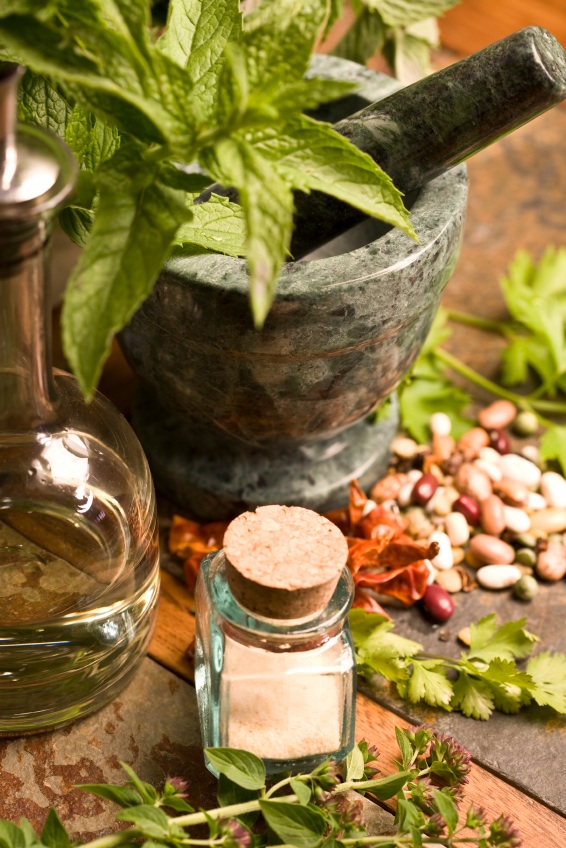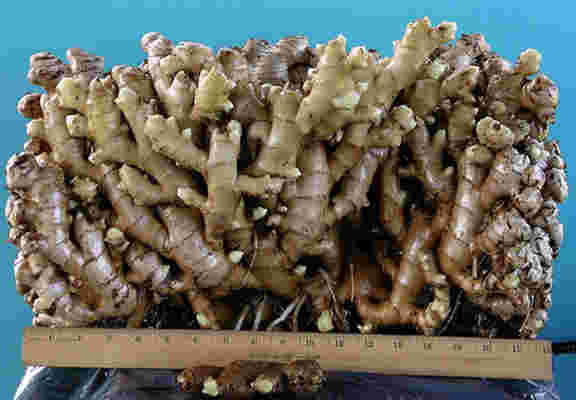No one likes to think about potential danger, damage, and insult to our lives. But frightful things can-and sometimes do-happen. Injuries can result, dramatically altering our lives. To handle possible emergencies, it's important to be prepared.
Use Common Sense
The Centers for Disease Control and Prevention (CDC) has lots of helpful information on what to do in case of hurricanes, tornadoes, wildfires, and other disasters, natural or man-made.
For potential disasters, it's vital to have a three-day supply of certain basics on hand. I keep nonperishable food, water, emergency clothing, flashlights with fresh batteries, toilet paper, baby wipes, matches, candles, a knife, a water purification kit, blankets, duct tape, twine, sterile gloves, surgical masks, a well-equipped first-aid kit, and a book on basic first aid in a large plastic bin at home, at work, and in my car.
No one can be completely prepared for every possible emergency. But we can be ready to deal with burns, bleeding, infection, diarrhea, fractures, food poisoning, and accompanying anxiety.
Anxiety
Anxiety is common for anyone facing an emergency situation. Extreme nervousness or a panic attack with a pounding heart, rapid or difficult breathing, and chest pain can all be characteristics of anxiety.
Kava root can relax you within a half-hour. Dosage: 1 tsp liquid 3 X daily or 70 mg of kavalactones 3 X daily in capsule form. Note: While it is best to avoid kava if you are consuming alcohol, short-term use at these dosages poses no risk.
Passionflower has been used traditionally for its calming and relaxing effect-and may also help with insomnia. Dosage: one 250 mg capsule 2 to 3 X daily or 1 tsp liquid 2 to 3 X daily.
Rescue Remedy is extremely helpful for anxiety in cases of physical or emotional emergency. Dosage: 10 drops under the tongue for shock or a severe fright.
Other options include chamomile tea and valerian tincture (1 tsp 3 X daily).
Burns
Burns can be caused by hot water, sun exposure, chemicals, and electricity. Drink an electrolyte beverage and plenty of water to replace lost fluids. For a minor burn from touching a hot surface, immediately take arnica for shock (one dose of 4 to 8 pellets). Once the shock has passed, pain from the burn sets in. At this point, consider:
* Cantharis to prevent or reduce blistering and pain. Dosage: 30c potency, 4 to 8 pellets, 4 to 6 X daily for acute burns.
* Calendula lotion or gel, applied at least twice daily, to ease pain, shorten healing time, and prevent infection.
Other options include causticum for severe burns and pain with blister formation. Hypericum lotion also relieves discomfort and aids healing.
Bleeding and Wounds
Bleeding from cuts or wounds is when the first-aid kit (full of sterile 4" x 4" gauze pads, Band-
Aids, surgical tape and wraps, and pressure bandages) is especially helpful. To stop bleeding, press sterile gauze or the cleanest material available firmly over the wound. When the bleeding stops, bandage the wound firmly. But be aware of the need for emergency care if bleeding persists. Call 911 for more serious injuries.
Among natural medicines, the quickest acting are homeopathic. Arnica is the first choice if the bleeding is from a blow or a fall, or if the victim is in shock. Also consider:
* China when bleeding is accompanied by weakness, faintness, or shortness of breath.
* Carbo vegetalis if there is steady oozing of dark blood and the individual has collapsed, has cold or clammy perspiration, and shortness of breath. In addition, call 911.
* Ipecac for bright red blood that gushes (common during a nosebleed), accompanied by nausea and/or cold sweat.
* Phosphorus for a profuse nosebleed, following injury.
Cinnamon essential oil contains tannin constituents that can quickly reduce the amount of bleeding from any source. Take 1 to 5 drops every 3 to 5 hours.
Digestive Upset
Diarrhea can result from contaminated water and/or food, viral infections, electrolyte imbalance, dehydration, or even stress, all common in emergencies.
Garlic (as capsules, powdered, or whole clove) is useful where you anticipate contaminated food or water. Antimicrobial, antibacterial, antifungal, antiviral, and protective against intestinal parasites, this herb has been found to fight E. coli and can inhibit the overgrowth of Candida albicans. Dosage: 1 capsule 2 X daily.
Probiotics, or friendly bacteria like Lactobacillus acidophilus, can aid digestion and fight infection. Probiotics also stimulate immune cells in the local area to fight infection. For acute diarrhea, use products with 10 billion active organisms 2 to 3 X a day for 2 weeks. Take Saccharomyces boulardii for acute diarrhea: 1 capsule 2 X a day for 10 days.
Activated charcoal powder is also useful for diarrhea. Its porous nature allows it to absorb viruses, bacteria, and parasites into its surface area, and carry them out of the body through the stool. Dosage: 2 capsules 2 X a day for 3 days.
Also consider ginger tea every 2 hours, digestive enzymes (1 to 2 capsules with each meal), 500 mg of oregano oil in capsule form (especially if you suspect parasites), or cinnamon bark powder, 1/2 tsp daily.
Food poisoning can occur after eating foods that are unrefrigerated, undercooked, or handled in less than hygienic circumstances. Bacteria may also be found in local water after storms.
Probiotics combat harmful bacteria. Dosage: at least 5 to 10 billion active organisms 2 to 3 X daily.
Oregano oil has antibacterial benefits. Dosage: one 500 mg capsule 4 X daily until symptoms are resolved. Activated charcoal powder can help absorb toxins from food poisoning. Dosage: 3 capsules every 2 to 3 hours for three doses.
Garlic offers a wide range of benefits. Dosage: 1 clove or 1 capsule, 2 to 3 X daily. Arsenicum (30c) is the most common homeopathic remedy for food poisoning. It can treat vomiting and anxiety, as well as diarrhea. Ipecac (30c) is advised for diarrhea accompanied by nausea and vomiting.
Also consider goldenseal (300 mg or 1 ml tincture 4 X daily) and ginger (500 mg capsules or 2 ml tincture every 2 hours).
Fractures and Breaks
Fracture is one of the worst injuries that can happen in an emergency. Pain, swelling, bruising, immobility, and shock are the immediate concerns. It's necessary to splint the bones above and below the break. (Here the first-aid book is helpful). Whenever possible, get immediate medical attention. Fractures not only cause continued pain but can also puncture nearby tissue, causing internal and/or external bleeding, and poor healing.
Arnica (30c) should be given as soon as possible after a fracture to reduce pain and swelling while helping to reduce shock. Dosage: 4 to 8 pellets every 2 hours for the first day and then 3 to 4 X daily for the next few days.
Bryonia, for pain caused by the slightest movement, is best taken during the first week after a fracture. Take a couple of doses of arnica in the morning and bryonia twice in the afternoon or evening.
Ice or a cold pack should be applied immediately and for the first 48 hours to reduce the swelling and pain.
Bromelain helps your body to recover after a fracture, injury, fall, or bruise. It has anti-inflammatory effects and can reduce swelling and pain. Dosage: 300 mg to 500 mg 3 X daily.
Infections
Infections, whether of the ear, digestive system, respiratory tract, or skin, respond to antibacterial and antiviral plants. Taken orally, these botanicals can enhance the immune response. Echinacea is especially well-known for its antiviral properties. Dosage: 2 tsp liquid 4 X daily, or 2 capsules 4 X daily.
Garlic is antimicrobial, antibacterial, antifungal, antiviral, and anti-parasitic. Eat 2 or more cloves daily, or take 1 capsule 2+ X daily.
Zinc supports immune function and may also have antiviral effects. Zinc lozenges can be used every 2 hours for sore throats, or as a supplement take 15 to 40 mg of zinc a day to help fight an array of infections.
Also consider calendula tincture, which can be applied topically to infections of the skin (it stings just like topical iodine). Make a paste with charcoal powder and flour, and place it between two pieces of clean, soft cloth. Apply to the affected area.
Shock requires immediate attention. Lie the victim down, with feet slightly raised (which sends blood to the head). Keep him warm, offer reassurance, and give arnica. The dosage is 4 pellets every 15 minutes after experiencing an injury or accident that causes a shaky sensation; repeat every hour as needed.

















 red pome fruit
red pome fruit














